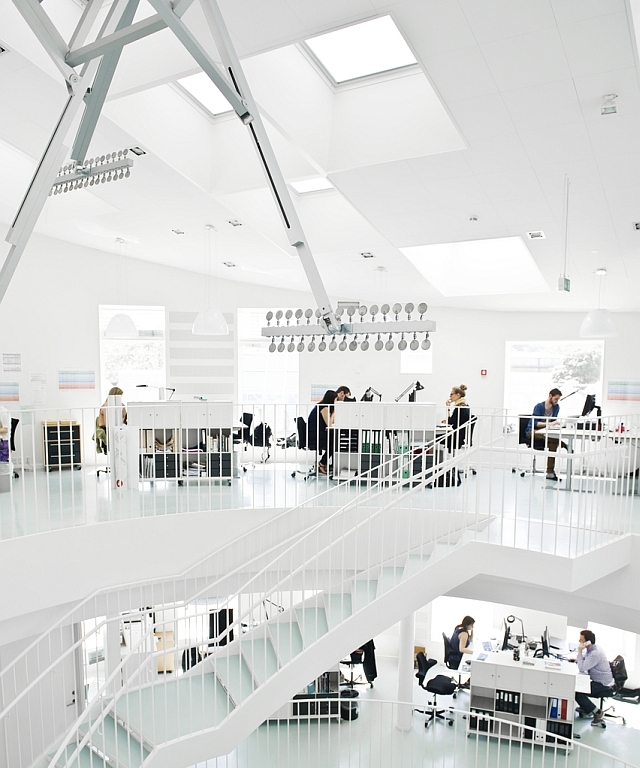
by Deborah Burnett, ASID, CMG, LGC, AASM – BENYA BURNETT CONSULTANCY, USA
Daylight is visible radiant energy organized into wavelength bands of varying power densities. Although appearing similar, artificial or electric light may come close to replicating the light but it still is missing key components of natural light, thus, the quality of the light is inferior when it comes to providing for our human biological need. The dynamic bands of energy (represented by color bands in the illustrations below) are naturally aligned and predictably timed to enable both photopic/scotopic vision and coordinate circadian system functions such as blood pressure, heart rate, metabolic function and even urine output. Continuous light delivery from electric light sources such as LED, fluorescent and halogen do not provide the right combination of wavelengths to mimic that of the sun, thus the human response to light is not as nature intended. It is now becoming increasing clear in light of the recent AMA policy # H-135. 937 which warns that incorrectly timed and disproportionate % of blue wavelengths from electronic and electric light sources now pose harmful health impacts in the formation and progression of breast cancer, diabetes, obesity and metabolic syndrome.
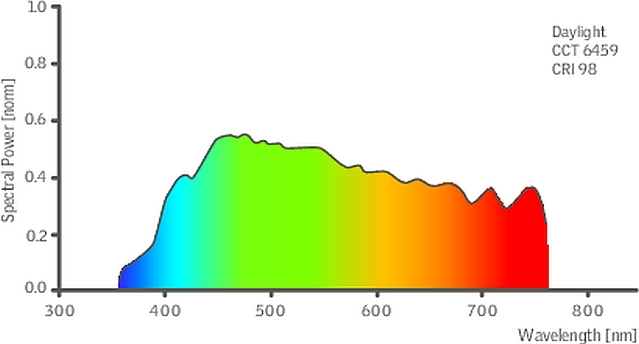 |
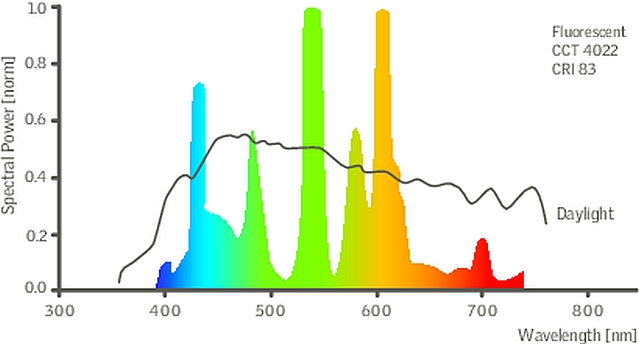 |
|
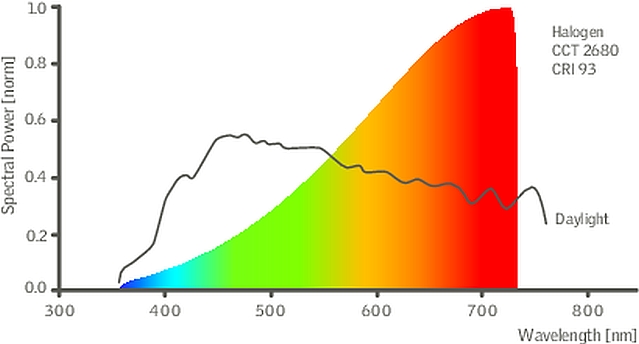 |
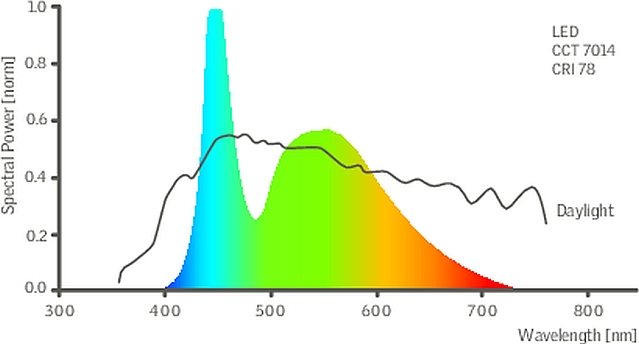 |
Daylight comparison with LED, Halogen and Fluorescent light sources: note the lack of energy bandwidth for all power densities as compared to daylight. For human health, wellbeing, sleep and productivity we need a light source which contains a full array of all energy bands. (Measurements made by John Mardaljevic).
As humans, we receive light thru our skin and specialized eye receptors [i]. Photometric factors such as timing, direction, intensity and spectral composition of the light are responsible for the timely release / suppression of brain chemicals which are responsible for critical human processes such as sleep, alertness and health. Without exposure to high levels of daylight each day, human behavior is also impacted: and especially critical work- related behaviors impacting productivity, performance and absenteeism [ii]. A recent study demonstrated that employees who slept one hour more each night netted employers a productivity cost savings of 1,967.00 per employee per year: and dynamic daylight plays a critical role in the process of sleep [iii].
Daylight is also optimized for controlling biological energy expenditure and availability. Marked by predictable patterns for rest and activity, measurable markers such as respiration rate, fluid retention, and muscle strength are also under the direction of exposure to daylight and darkness throughout a 24 hour day [iv]. Vital biological processes providing for alertness and cognition are also dependent upon light to signal neurochemicals which will bring about our ability for attention to detail, enable responsive muscle coordination, and provide us with quicker reaction times; all of which are critical factors in reducing workplace errors and accidents [v].
With workers now spending over 90% of each day away from natural daylight, lighting manufacturers are now in the process of trying to devise an alternative for natural daylight. Although the industry is making great strides in attempting to provide electric light sources which enhance daytime alertness and promote evening sleep, delivering the correct dose of light to realize measurable workplace benefits will not be successful without the full participation of design professionals who embrace the unfolding protocol-based best practice methodology for acquiring information, assessing need and providing for biological-based design specifications which deliver outcomes of wellness, productivity, reduced absenteeism, decreased preabsenteesism and increased employee satisfaction scores. Although nothing comes close to natural daylight for both widespread biological benefit and long range cost savings, with the application of supplemental circadian adaptive lighting and targeted daylighting strategies the workplace of the future will be a significant improvement worth planning for.
[i] Berson DM, Takao M, et.al (2002). Phototransduction by Retinal ganglion Cells that set the Circadian Clock. Science 295: p. 1070-3
[ii] California Energy Commission Technical Bulletin October (2003). Number P500-03-082-A-9. Windows and Offices A study of Office workers Performance and the Indoor Environment
[iii] Rosekind, MR, Gregory,K.B. et.al (2010). The Cost Of Poor Sleep; Workplace Productivity Loss And Associated Costs. Journal of Occupational and Environmental Medicine Vol 52 ( 1 ): 91-98 DOI 10.1097/JOM.obo13e3181c78c30
[iv] Edelstein, E., Ellis, R., Sollers, J., Chong, G., Brandt, R., & Thayer, J. (2006). The Effects Of Lighting On Autonomic Control Of The Heart. Society of Psychophysiological Research 47th Annual Meeting. Savannah.




